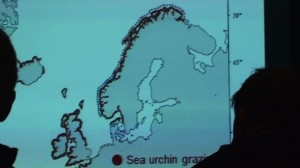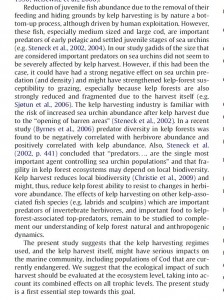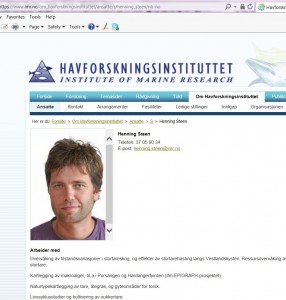Probably the biggest hazard facing the marine ecosystem in Norway, if not the world is seaweed harvesting – as we know seaweed removes many dangerous chemicals, including carbon dioxide and it is an oxygenator – it is also the home for an amazing number of creatures including many of our most important food animals – from the map in the previous post it is clear that the entire Norwegian coast is being harvested. The information on this is in the hands of qualified marine biologists.
I asked Henning Steen who gave the first lecture at the Runde taretråling conference, if the predation of sea urchins had anything to do with taretråling – he replied nothing at all – I then asked him if taretråling had ever been undertaken in the areas where sea urchins were causing problems – he replied that taretråling had no connection with sea urchin predation – This was in the conference hall with a full audience.

From the video on the Henning Steen lecture at Runde.
Another lecture was on the problems caused to seabirds by taretråling – i was able to read the paper later it was by Svein -Håkon Lorentsen among other authors
Essentially part of the document said that taretråling does have an impact on Sea urchin numbers – and here is the proof to show it.
https://www.sciencedirect.com/science/article/abs/pii/S0006320710002363
The Fiskeriedirektoratet has been receiving papers from us on seaweed harvesting worldwide – and other related information – when we asked them why we were of importance to them we were told that they had no other source – we then said surely you have a research department – we were told that it was run by Henning Steen –
So we did a little research into Mr. Steen – and this is what we found.
It appears he is responsible for the development of Taretråling on the Norwegian coast – and monitoring and establishing new areas to harvest.
Strangely enough we also found out that many of the directors of Fmc biopolymer come from the fiskeriedirektoratet and the havsforskning institut – so let’s be clear on this – there are very close ties between the industry and the regulatory bodies – very.

